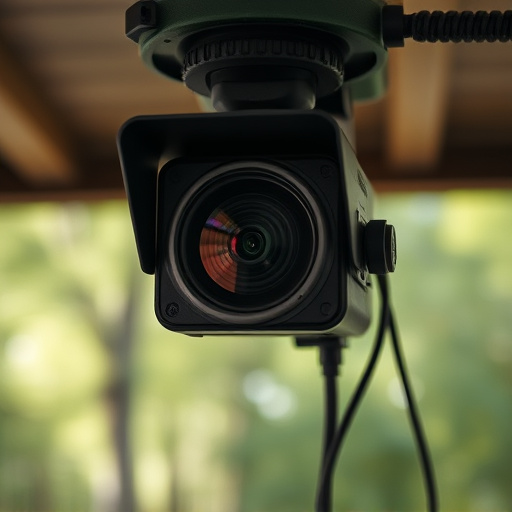Night vision technology in indoor spy cameras leverages specialized sensors to convert infrared into visible light, capturing clear images in darkness. Advanced scanning methods like PIR sensors, image intensification, and digital signal processing enhance detail. Professionals use sophisticated software to cross-reference signals from infrared to radio frequency, detecting even faint signals obscured by noise or electronics. Techniques include thermal imaging, RF analysis, and motion detection algorithms, revolutionizing surveillance against sophisticated indoor spy cameras with night vision in the digital age. Combining visual inspections, IR detectors, signal scanning tools, and strategic examinations bolsters protection against covert equipment.
Uncover the secrets of hidden recordings with our comprehensive guide on advanced scanning methods. In today’s world, discretion is key, especially with the prevalence of indoor spy cameras equipped with night vision technology. This article explores the intricate details behind detecting these covert devices. From understanding the complexities of night vision to mastering signal scanning techniques, we provide valuable insights for identifying hidden cameras. Discover cutting-edge tools and strategies that empower you to navigate this modern surveillance landscape effectively.
- Understanding Night Vision Technology for Indoor Cameras
- Advanced Signal Scanning Techniques for Spy Cameras
- Detecting Hidden Cameras: Tools and Strategies
Understanding Night Vision Technology for Indoor Cameras
Night vision technology plays a pivotal role in enhancing the capabilities of indoor spy cameras, enabling them to capture clear images and videos even in complete darkness. This advanced feature is particularly crucial for security purposes, as it allows users to monitor sensitive areas without disturbing the environment or relying on external light sources. The inner workings of night vision technology involve specialized sensors that detect and convert infrared radiation into visible light, revealing what’s hidden in low-light conditions.
When it comes to indoor spy cameras with night vision, there are various scanning methods employed. These include passive infra-red (PIR) sensors, which detect body heat, and advanced image intensification systems that amplify existing light. Modern solutions often integrate digital signal processing algorithms to enhance image quality further, ensuring that details remain sharp and discernible even in the darkest of environments. This technology is a game-changer for home security, surveillance, and privacy monitoring, offering discreet and effective protection.
Advanced Signal Scanning Techniques for Spy Cameras
In the realm of hidden recording devices, advanced signal scanning techniques have become paramount for detecting elusive spy cameras, especially the indoor spy camera with night vision. Professionals now employ sophisticated software capable of analyzing and cross-referencing various signals, from infrared to radio frequency (RF), to pinpoint these covert devices. This cutting-edge technology allows for a comprehensive scan, ensuring that even the faintest of signals—often masked by ambient noise or hidden within complex electronic environments—is not overlooked.
By integrating multiple scanning methods, experts can navigate the labyrinthine spectrum of frequencies and wavelengths, where spy cameras operate discreetly. This multi-faceted approach includes thermal imaging, RF signal analysis, and motion detection algorithms, all working in harmony to expose the remnants of these hidden devices. In today’s digital era, such advanced signal scanning techniques have revolutionized the field, making it easier to detect and dismantle even the most sophisticated indoor spy camera with night vision.
Detecting Hidden Cameras: Tools and Strategies
Detecting hidden cameras, often referred to as indoor spy cameras with night vision, requires a combination of advanced tools and strategic approaches. One effective method involves utilizing infared (IR) technology, which many such devices employ for covert surveillance. Special IR detectors can identify heat signatures emitted by these cameras, even when they’re not actively recording. This is particularly useful in low-light conditions, a common feature of indoor spy cameras with night vision.
Another crucial strategy is to conduct thorough visual inspections using high-resolution cameras and zoom lenses. Experts often recommend carefully examining corners, edges, and hard-to-reach areas where hidden cameras might be concealed. Additionally, employing signal scanning tools that can detect wireless signals emitted by these devices can provide a comprehensive approach to identifying potential threats. These techniques, combined with ongoing vigilance, significantly enhance the ability to uncover hidden surveillance equipment.
Hidden recording devices pose a unique challenge, but with advanced signal scanning methods like those employed in spy cameras, detecting them has become more feasible. By understanding night vision technology tailored for indoor environments and employing specialized tools, users can enhance their privacy protection. An Indoor Spy Camera With Night Vision equipped with cutting-edge sensors and algorithms is a powerful asset in navigating the intricate landscape of hidden camera detection, ensuring peace of mind in any setting.
